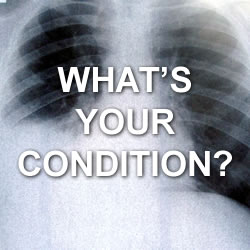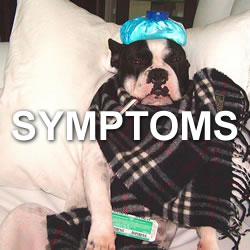Coronavirus
Not all coronaviruses are deadly — the ones endemic to humans, like the common cold, are often considered inconsequential. The coronaviruses that pose a pandemic risk, however, are those that hang out in animals - Aylin Woodward
.jpg)
image by: Sexenio
HWN Suggests
Towards a universal coronavirus vaccine: science fact or science-fiction?
Coronaviruses cause many diseases, including SARS, MERS and even the common cold. Unlike colds, SARS and MERS are serious respiratory diseases; SARS caused an outbreak of severe pneumonia in China in 2002 in which almost one in ten of the 8098 reported cases were fatal.
MERS emerged in the Middle East in 2012 and while the outbreak continues, the rate of serious disease has been low. This could be because, having learned lessons from SARS, the public health response has been effective; it could be that MERS simply isn’t as infectious as SARS; or MERS may be very infectious but without causing disease in all cases.
SARS and MERS are betacoronaviruses – one of four types of coronavirus.…
Resources
 COVID-19
COVID-19
New diseases are mirrors that reflect how a society works—and where it fails - Ed Yong
 The origins and dangers of coronaviruses
The origins and dangers of coronaviruses
What are coronaviruses, where do they come from and why is it in the interest of public health to monitor them? We discuss this and more with Linfa Wang, Editor-in-Chief of Virology Journal, in our podcast.
Coronavirus and Other Respiratory Illnesses Comparing Older with Young Adults
Coronaviruses are enveloped, single-stranded, positive-sense RNA viruses and undergo RNA recombination and mutations facilitating adaptation from animals to humans. The identification of severe acute respiratory syndrome coronavirus and Middle East respiratory syndrome coronavirus as causes of human disease has increased the clinical significance of coronaviruses. Human coronaviruses (HCoVs) cause the common cold and influenza-like illnesses. Coronaviruses and other respiratory viruses also are associated with a number of more serious acute respiratory illnesses, such as pneumonia, exacerbations of asthma and chronic obstructive pulmonary disease, croup, and bronchiolitis.
Coronavirus: Researcher Devise Drug Cocktail
When a new disease emerges, scientists and physicians hope something that's already in the medicine cabinet can be used to treat it. A new study suggests for the novel coronavirus, that may be the case.
SARS and MERS coronaviruses with Stanley Perlman
How do researchers study a new pathogen? Stanley Perlman talks about how virus researchers studied SARS and MERS after they emerged, what they learned, and why there are no more cases of SARS. He also discusses his work on a coronavirus model of multiple sclerosis.
SARS, MERS and the Coronaviruses
There are at least 6 coronaviruses that cause infections in humans: alpha coronaviruses 229E and NL63 and beta coronaviruses OC43, HKU1, and SARS-CoV; and the new MERS-CoV. Severe Acute Respiratory Syndrome (SARS) and Middle East Respiratory Syndrome (MERS) are novel coronaviruses that cause severe viral pneumonia in humans. Most coronavirus infectinos are mild respiratory tract infections.
The coronavirus conundrum: when to press the panic button
We have become very good at detecting risk, but it's impossible to know if this latest virus will be another Sars or disappear
The Coronavirus Could Be the 'Next Big One'
The deadly coronavirus was first discovered last September, when a Qatari man traveled to London to receive medical attention for a mysterious illness. It raised a red flag among experts from the outset. “There are certain families of viruses and...
The Good News About Our Battle With Global Heath Threats From MERS, SARS, Ebola And The Flu
The good news is that even though we face a problem of epic dimensions, we also have powerful new tools to prevent or fight the next outbreak. Already, advances in our understanding and treatment of these types of infectious disease have enabled us to limit the spread of these newer viruses. Medical researchers are figuring out how emerging diseases like MERS are transmitted. And, as a result, we’re better prepared for the future than at any time in the past.
Where Do Scary Diseases Like SARS and MERS Come From? Animals
Middle-Eastern Respiratory Syndrome, or MERS, has a lot in common with other emerging disease threats: we probably got it from animals.
 Towards a universal coronavirus vaccine: science fact or science-fiction?
Towards a universal coronavirus vaccine: science fact or science-fiction?
Coronaviruses cause many diseases, including SARS, MERS and even the common cold. Unlike colds, SARS and MERS are serious respiratory diseases; SARS caused an outbreak of severe pneumonia in China in 2002 in which almost one in ten of the 8098 reported cases were fatal.
CDC
The Centers for Disease Control and Prevention (CDC) is closely monitoring an outbreak caused by a novel (new) coronavirus first identified in Wuhan, Hubei Province, China.
Intermountain Healthcare
Human coronavirus refers to a group of viruses that cause the common cold around the world. Young children are most likely to get infected, but people can have multiple infections over a lifetime – and most people on the planet will get sick from coronavirus at one time or another.
Life in the Fastlane
Severe Acute Respiratory Syndrome (SARS) and Middle East Respiratory Syndrome (MERS) are novel coronaviruses that cause severe viral pneumonia in humans.
Medical News Today
Coronaviruses are viruses that belong to the subfamily Coronavirinae in the family Coronaviridae that typically affect the respiratory tract of mammals, including humans - they are associated with the common cold, pneumonia and severe acute respiratory syndrome (SARS). The virus may also affect the gut.
Merck Manual
Coronaviruses are enveloped RNA viruses. Coronavirus infections in humans most frequently cause symptoms of the common cold. Coronaviruses 229E and OC43 cause the common cold; the serotypes NL63 and HUK1 have also been associated with the common cold. Two coronaviruses, MERS-CoV and SARS-CoV, cause much more severe respiratory infections in humans than other coronaviruses. In 2012, the coronavirus MERS-CoV was identified as the cause of Middle East respiratory syndrome (MERS). In late 2002, SARS-CoV was identified as the cause of an outbreak of severe acute respiratory syndrome (SARS).
NIH
Although a case of SARS has not been documented since 2004, NIAID continues to support more than a dozen research projects on this coronavirus throughout the United States, because the knowledge can be applied to other studies. Those studies include developing SARS treatments, a vaccine, and a better understanding of how the virus interacts with the immune system. When MERS-CoV emerged in 2012, NIAID intramural and extramural scientists mobilized quickly to research the virus. Key areas of investigation include basic research on where MERS-CoV comes from and how it causes disease, the development of animal models to study the virus, and the development of treatments and vaccines.
Sabin Vaccine Institute
Past and ongoing pandemic threats from coronaviruses have prompted a new urgency to develop a pan-coronavirus vaccine as a global countermeasure. Both SARS and MERS are classified as Category C biodefense agents by the U.S. National Institutes of Health, with an intense capacity to inflict devastating disease outcomes and disrupt local, national and global economies.

Introducing Stitches!
Your Path to Meaningful Connections in the World of Health and Medicine
Connect, Collaborate, and Engage!
Coming Soon - Stitches, the innovative chat app from the creators of HWN. Join meaningful conversations on health and medical topics. Share text, images, and videos seamlessly. Connect directly within HWN's topic pages and articles.














